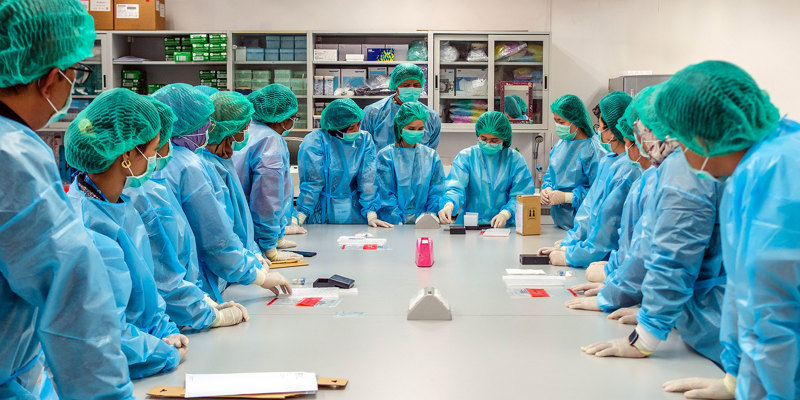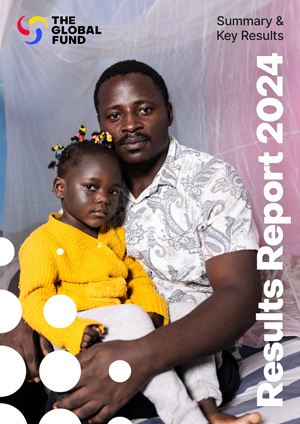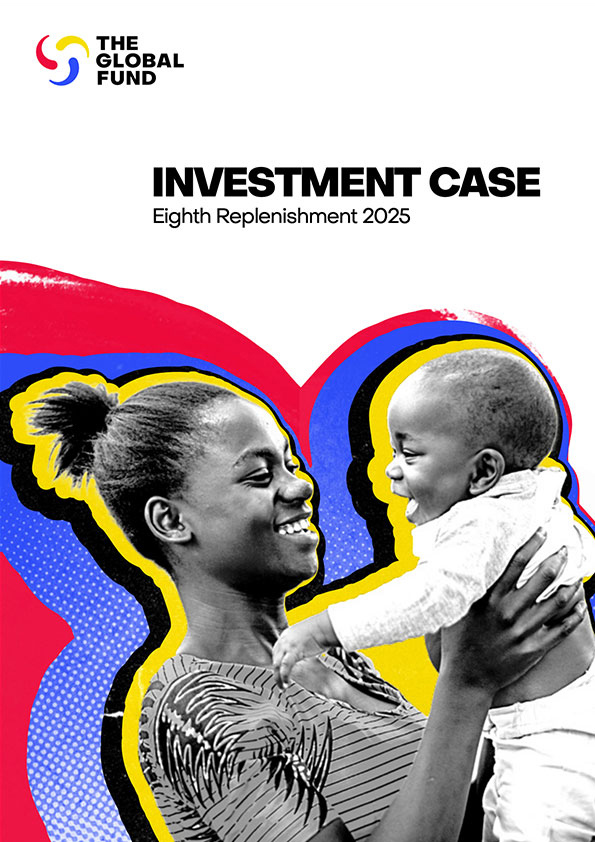Global Fund support extends antiretroviral treatment to 4.2 million people
29 November 2012
GENEVA - The Global Fund to Fight AIDS, Tuberculosis and Malaria announced new results on Thursday showing a substantial increase in the number of people being treated for HIV and in the prevention of mother-to-child transmission of the virus.
The results show an increase of 900,000 in the number of people receiving antiretroviral therapy since the end of 2011, taking the total now getting treatment under programs supported by the Global Fund to 4.2 million.
"I am thrilled to see that we were able to extend treatment to almost another million people in need", said Gabriel Jaramillo, the Global Fund General Manager.
The increase has been driven to a great extent by a steady scale-up of access to life-saving antiretroviral medication in sub-Saharan countries, such as Zimbabwe and Zambia. It reflects rising investment in treatment by countries with support from the Global Fund, which is narrowing the gap in coverage.
In 2011, Zambia reached universal access, defined as more than 80% antiretroviral coverage. Between 2009 and 2011, Zimbabwe increased the coverage of people receiving treatment by more than 50%. Cambodia, Namibia, Rwanda and Swaziland also reached universal coverage in 2011.
A steady fall in the cost of drugs has been another factor contributing to the rapid scale-up of treatment. A year's supply of first-line antiretroviral drugs costs today less than $100 for the least expensive regimen recommended by the WHO, down from more than $10,000 in 2000.
The new results show a rise in all HIV-related interventions financed by Global Fund grants.
The number of pregnant women receiving antiretroviral medicines to prevent the transmission of HIV to their unborn children grew from 1.3 million to 1.7 million from the end of 2011. The number of HIV counselling and testing sessions also increased from 190 million to 250 million in the same period (please see table below).
The total number of condoms distributed jumped from 3.5 billion to 4.2 billion between the end of 2011 and 2012. Interventions related to behaviour change communications almost doubled, from 160 million to 300 million.
Care and support services provided to patients increased from 13 million to 19 million, and services delivered to Most-at-Risk Populations, including female sex workers, injecting drug users and men who have sex with men, rose from 23 million to 30 million.
The results also show significant progress in the fight against tuberculosis and malaria. The number of new smear-positive TB cases detected and treated increased from 8.6 million, by the end of 2011, to 9.7 million, by the end of 2012. Over the same period, 80 million new insecticide-treated nets were distributed, taking the total number of nets handed out by the Global Fund to date to 310 million.
| Indicator HIV | End 2006 | End 2007 | End 2008 | End 2009 | End 2010 | End 2011 | End 2012 |
|---|---|---|---|---|---|---|---|
| HIV- People currently on ART | 580,000 | 1,400,000 | 2,000,000 | 2,500,000 | 3,000,000 | 3,300,000 | 4,200,000 |
| HIV- Positive pregnant women receiving ARV prophylaxis for PMTCT | 82,000 | 150,000 | 440,000 | 750,000 | 1,000,000 | 1,300,000 | 1,700,000 |
| HIV- Counseling and testing encounters | 9,400,000 | 34,000,000 | 62,000,000 | 110,000,000 | 150,000,000 | 190,000,000 | 250,000,000 |
| HIV- Condoms distributed | 430,000,000 | 750,000,000 | 1,200,000,000 | 1,800,000,000 | 2,700,000,000 | 3,500,000,000 | 4,200,000,000 |
| HIV- Care and support services provided | 1,100,000 | 2,900,000 | 5,200,000 | 7,000,000 | 10,000,000 | 13,000,000 | 19,000,000 |
| HIV- BCC* | 16,000,000 | 33,000,000 | 65,000,000 | 88,000,000 | 110,000,000 | 160,000,000 | 300,000,000 |
| HIV- Special Groups (MARPs)** | 3,600,000 | 6,700,000 | 12,000,000 | 16,000,000 | 22,000,000 | 23,000,000 | 30,000,000 |
| TB - New smear-positive TB cases detected and treated | 2,500,000 | 3,300,000 | 4,600,000 | 6,000,000 | 7,700,000 | 8,600,000 | 9,700,000 |
| Malaria - Nets distributed (ITNs and LLINs) | 18,000,000 | 46,000,000 | 70,000,000 | 100,000,000 | 160,000,000 | 230,000,000 | 310,000,000 |
* Behaviour Change Communications
** Most-at-Risk Populations







